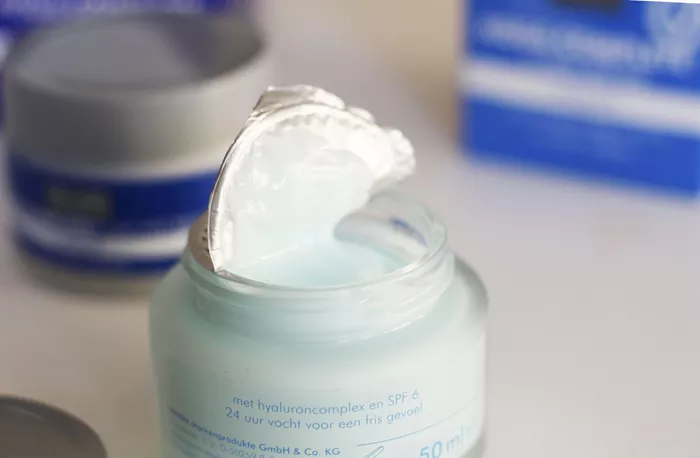Hot flashes are a common symptom experienced by women, particularly during menopause. They are characterized by sudden feelings of heat, often accompanied by sweating, rapid heartbeat, and sometimes chills. These episodes can be uncomfortable and disruptive, affecting a woman’s daily activities and quality of life. Many women seek relief from hot flashes, and one option that has gained attention is progesterone cream. But does it really help? In this article, we’ll explore the potential benefits of progesterone cream for hot flashes, how it works, and what to consider before using it.
What Is Progesterone Cream?
Progesterone cream is a topical product that contains the hormone progesterone, which plays a crucial role in regulating various bodily functions, including menstrual cycles and pregnancy. Progesterone is produced naturally by the ovaries, but as women approach menopause, their progesterone levels decline, leading to symptoms like hot flashes.
Progesterone creams are often marketed as a natural remedy to alleviate menopausal symptoms. They are applied directly to the skin, where they are absorbed into the bloodstream. However, the effectiveness of progesterone cream for hot flashes remains a topic of debate. Some women report relief from symptoms, while others see little to no improvement.
How Progesterone Cream Works
Progesterone works by balancing the effects of estrogen, another hormone that declines during menopause. Estrogen dominance, which occurs when estrogen levels are much higher than progesterone, is believed to contribute to many menopausal symptoms, including hot flashes. By supplementing progesterone, some women may experience a reduction in hot flashes and other symptoms.
The idea behind using progesterone cream is that it can help restore hormonal balance and reduce the intensity and frequency of hot flashes. When applied to the skin, the progesterone is absorbed and enters the bloodstream, where it can potentially regulate hormonal fluctuations and ease symptoms.
The Effectiveness of Progesterone Cream for Hot Flashes
Several studies have investigated the use of progesterone cream for hot flashes. While the results are mixed, there is evidence to suggest that progesterone therapy, in general, may help alleviate menopausal symptoms. Some women report a significant reduction in the frequency and severity of hot flashes, while others see little to no change.
One study found that progesterone therapy reduced the frequency of hot flashes in some women, especially when combined with estrogen therapy. However, other studies have shown that progesterone alone may not be as effective as other treatments, such as hormone replacement therapy (HRT) or lifestyle changes.
It’s important to note that the effectiveness of progesterone cream may vary depending on factors like dosage, frequency of application, and individual response. Consulting with a healthcare provider is recommended to determine whether progesterone cream is a suitable option for managing hot flashes.
Potential Benefits of Progesterone Cream
Hormonal Balance: Progesterone cream may help restore hormonal balance by increasing progesterone levels and reducing estrogen dominance, potentially easing hot flashes.
Non-Invasive: Unlike oral medications, progesterone cream is applied topically, which some women prefer because it bypasses the digestive system and avoids potential gastrointestinal side effects.
Convenience: Progesterone cream is easy to use, and many women find it convenient to apply it daily as part of their skincare routine.
Fewer Side Effects: Some women may experience fewer side effects with progesterone cream compared to other treatments like oral hormone therapy.
Considerations Before Using Progesterone Cream
While progesterone cream may offer relief from hot flashes for some women, it’s important to consider the following:
Consult a Healthcare Provider: Before using progesterone cream, it’s essential to talk to a doctor, especially if you have a history of hormone-related conditions, such as breast cancer or blood clots.
Possible Side Effects: Although progesterone cream is generally considered safe, some women may experience side effects, including skin irritation, headaches, or dizziness.
Dosage and Application: It’s important to follow the instructions provided with the cream and apply the correct dosage. Overuse or incorrect application may not provide the desired effects.
Individual Responses: Each woman’s body responds differently to hormonal treatments. Progesterone cream may work for some but not for others, and it may take time to notice any improvement.
Other Treatment Options for Hot Flashes
Progesterone cream is just one option for managing hot flashes. Other treatments that may help include:
Hormone Replacement Therapy (HRT): HRT is a more comprehensive treatment that combines estrogen and progesterone to help manage menopausal symptoms.
Lifestyle Changes: Simple changes such as staying cool, avoiding triggers like spicy foods or alcohol, and practicing relaxation techniques can help reduce the occurrence of hot flashes.
Herbal Supplements: Some women find relief from hot flashes by using herbal remedies like black cohosh, red clover, or evening primrose oil. However, the effectiveness of these supplements varies.
Conclusion
Progesterone cream may help relieve hot flashes for some women, but it is not a one-size-fits-all solution. While some studies suggest that it can be effective in balancing hormones and reducing symptoms, individual responses can vary. It’s important to consult with a healthcare provider to determine the best course of action for managing hot flashes, whether through progesterone cream or other treatments. By considering all options and discussing them with a doctor, women can make an informed decision about how to best manage their menopausal symptoms.
Related topics:
- 6 Best Wild Yam Progesterone Creams
- Does Progesterone Help With Night Sweats?
- Understanding Ovestin Cream: Uses and Benefits


